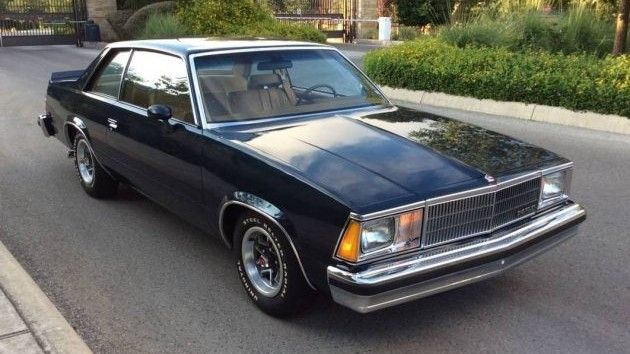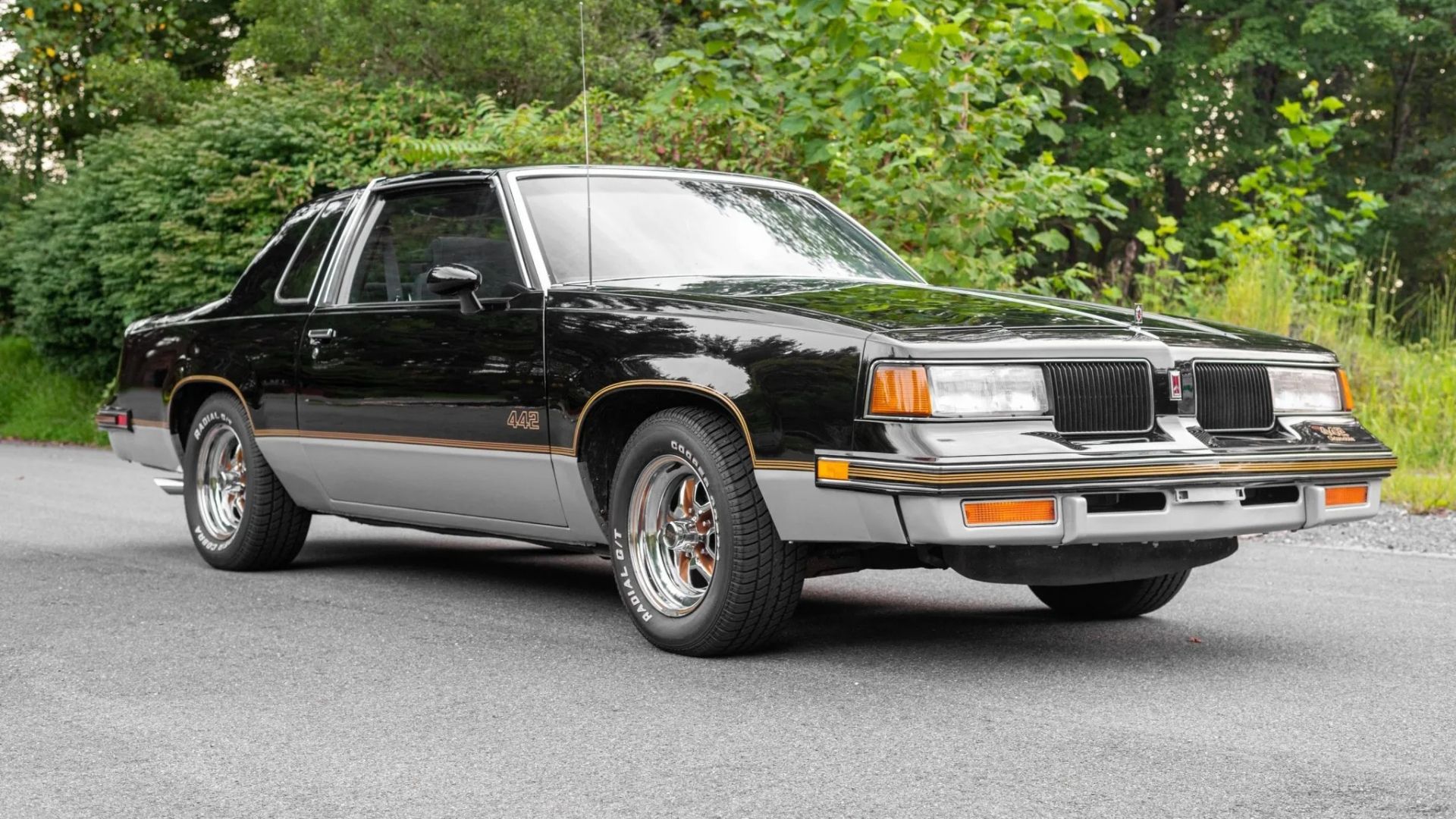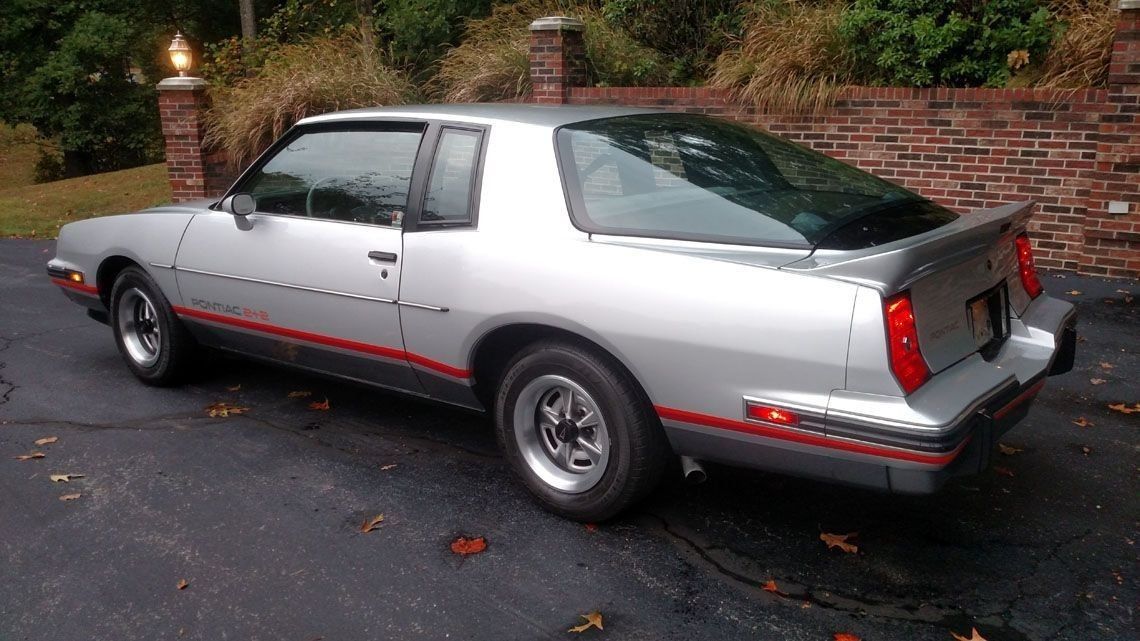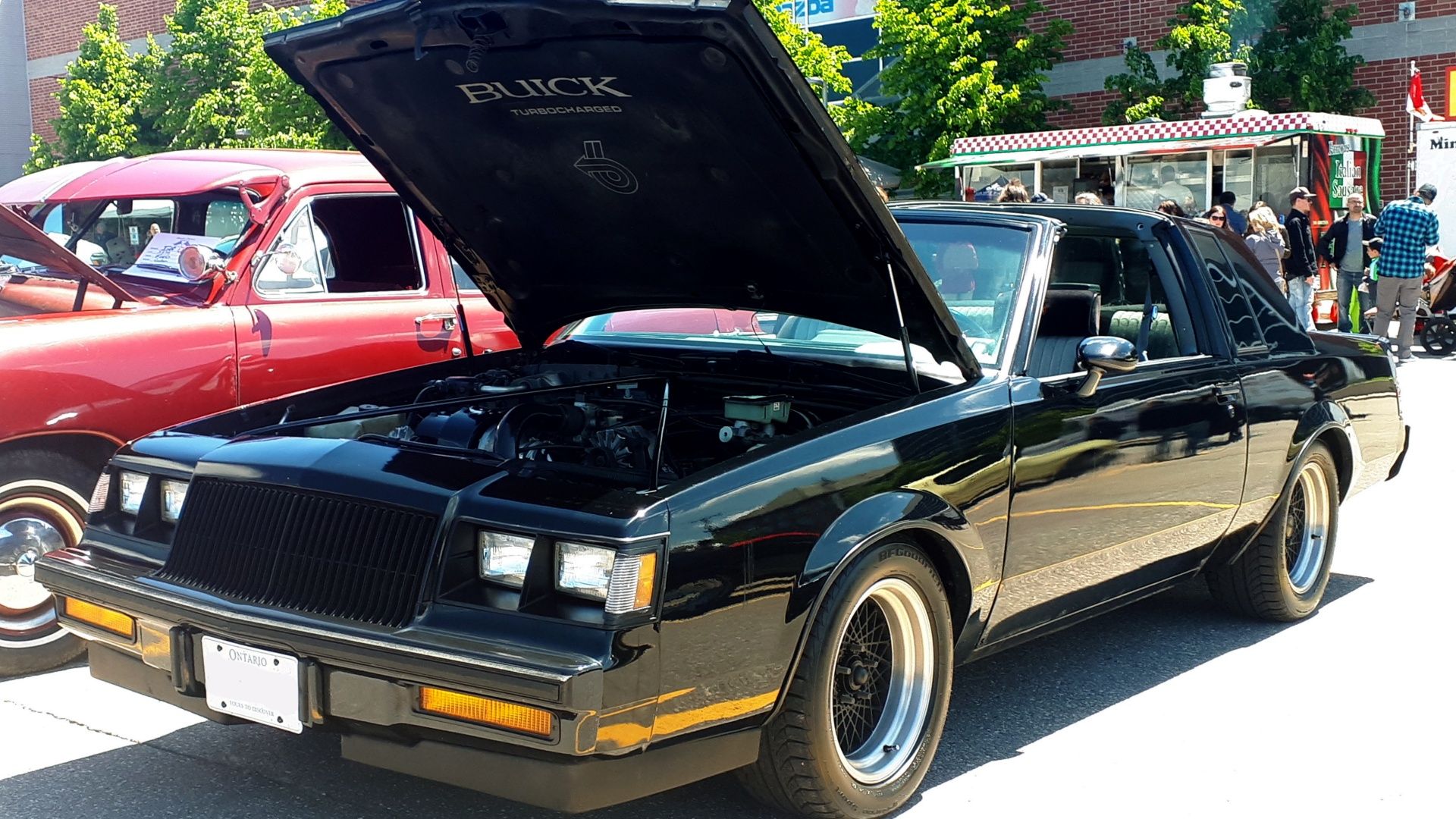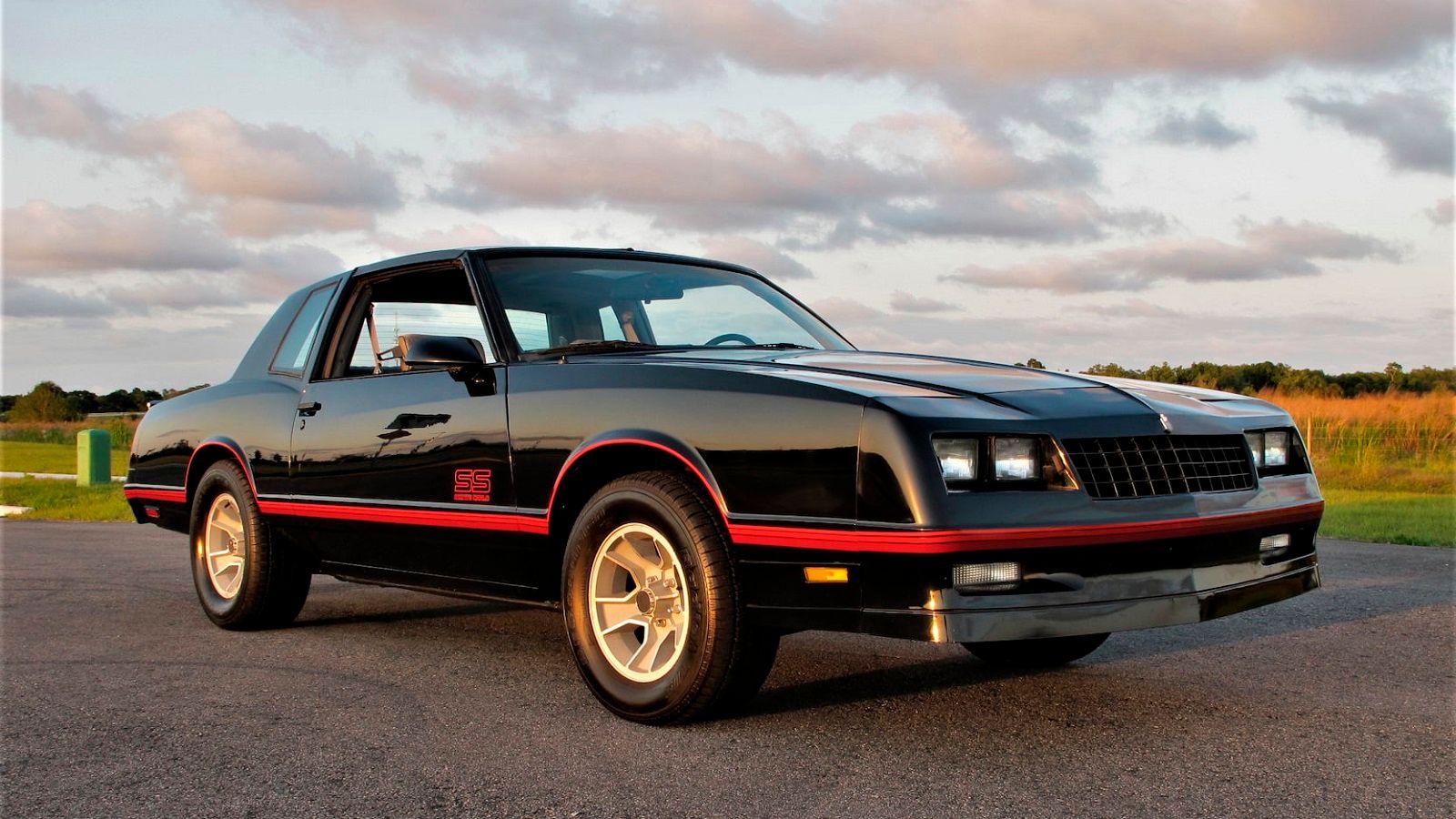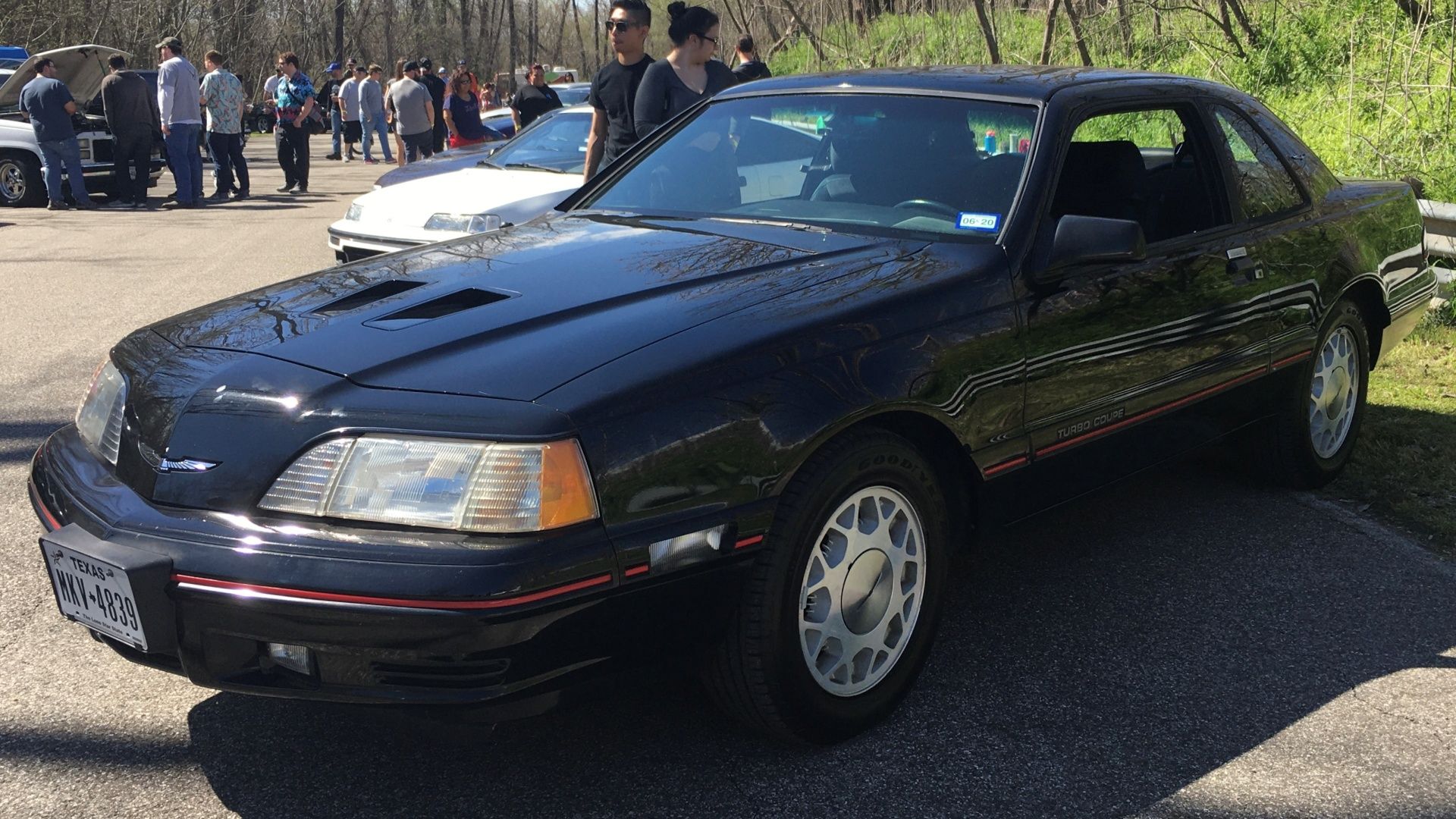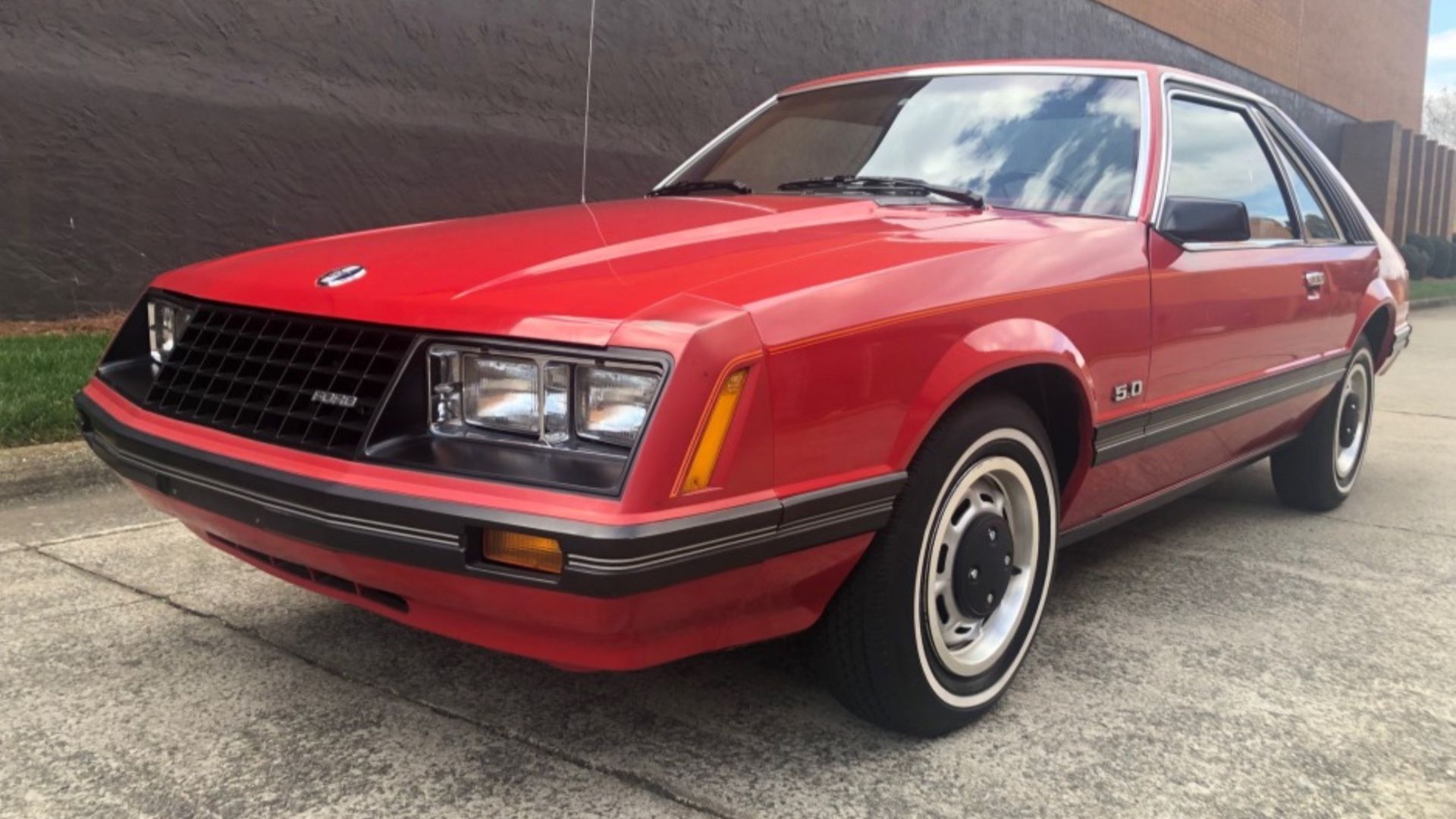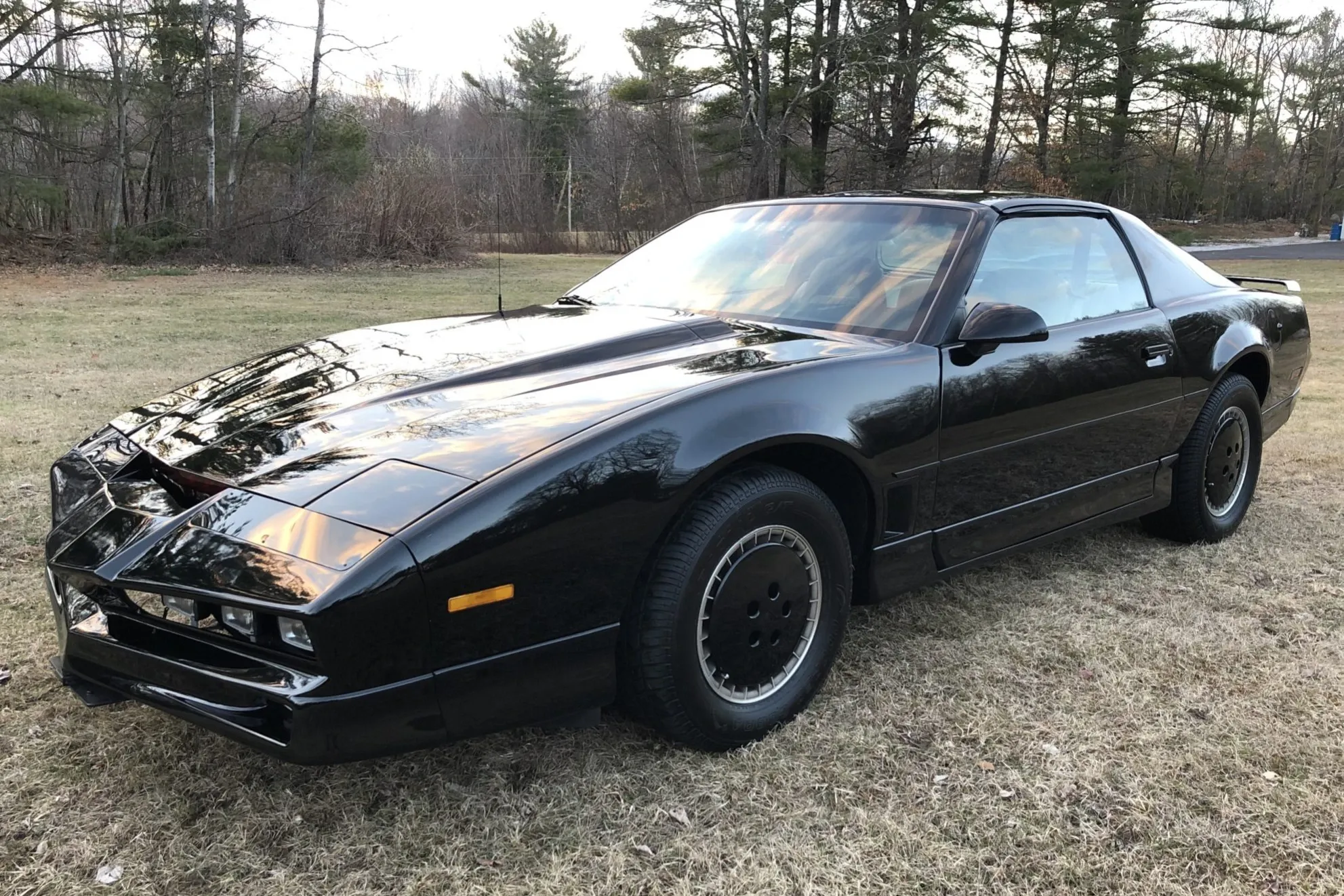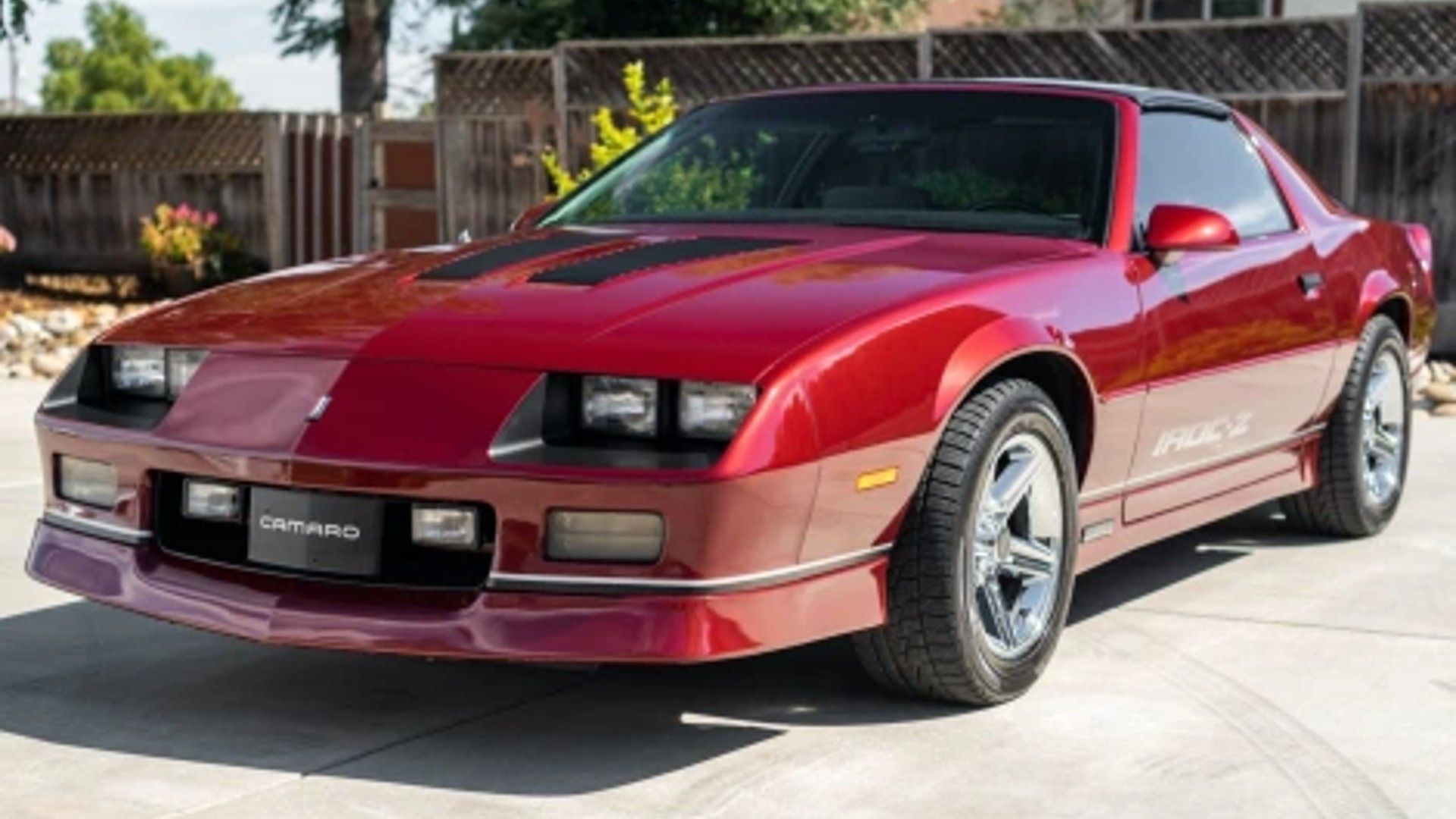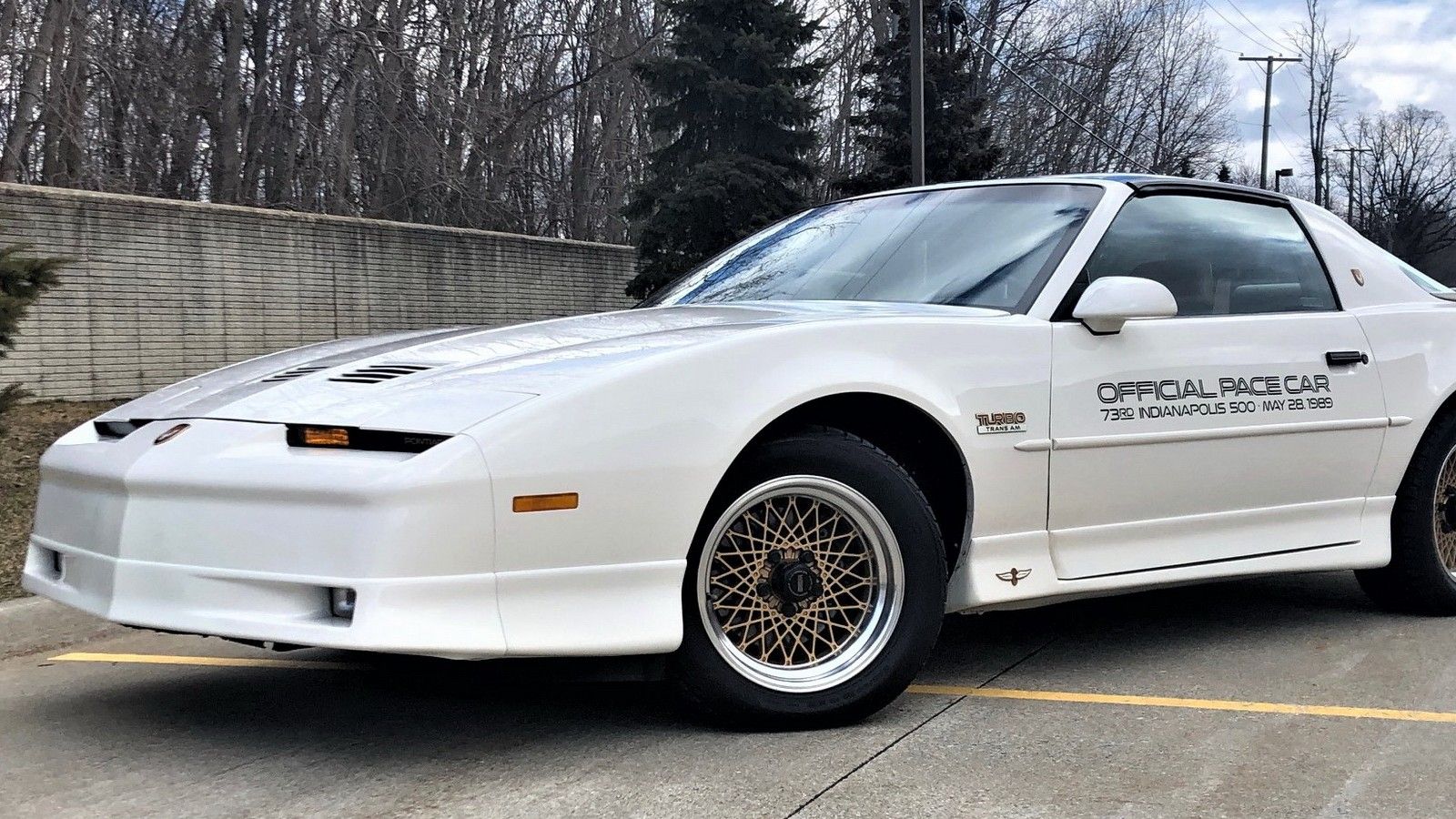Some will overlook ’80s muscle cars and argue that this era didn’t produce any real cars that qualified as muscle machines. Others look back at the 1980s as a time of transition in the automotive world, bringing muscle cars from the days of big block V-8 engines to an era in which smaller engines became the norm. This decade is often referred to as the “dark days” of the automotive world, especially in America, where many foreign names were capturing volume sales amidst the oil embargos.
Dark days or not, muscle cars survived the times and continued strong through the 1980s despite several challenges. More than 80% of all 80s muscle cars were built on only three vehicle platforms: the GM intermediate G-body, the GM pony car F-body, and the Ford Fox-body platforms. Chrysler (now Stellantis) had all but abandoned performance cars with a field of small, FWD cars that couldn’t be considered muscle cars at all.
Using data from MotorTrend, Car and Driver, Ford, and General Motors, we bring you the ten best 80s muscle cars ranked by top speed.
10 Chevrolet Malibu
Top Speed: 104 MPH
The Chevrolet Malibu was a leftover muscle car from the 1970s that lasted until the 1983 model year. This heavy car rode on the G-body platform and came in three body styles: two-door coupe, four-door sedan, and wagon. This version of the Malibu was smaller and lighter than the previous version, offering slightly better fuel mileage.
Performance Specifications
|
Engine |
4.4-liter V-8 |
|
Horsepower |
115 hp |
|
Torque |
205 lb-ft |
|
Transmission |
3-speed automatic |
|
Driveline |
RWD |
|
Fuel Economy |
16 mpg combined |
|
0-60 MPH |
13.9 seconds |
|
Top Speed |
104 mph |
(Performance specs sourced from GM)
The Chevrolet Malibu was one of the best 80s muscle cars because it came with a body-on-frame build, triangulated four-link rear suspension, lighter weight, massive aftermarket support, small-block V-8, and enough space in the engine compartment to support a big-block V-8.
9 Oldsmobile 4-4-2 and Hurts/Olds
Top Speed: 117 MPH
The G-body platform from GM is becoming a theme on this list with the Oldsmobile 442. From 1978 to 1988, this car was an impressive muscle car, giving the Oldsmobile brand something special. The name changed a few times with the Hurts/Olds in place in 1983 and 1984, but the rest of the decade saw this car wear the 4-4-2 name.
Performance Specifications
|
Engine |
5.0-liter V-8 |
|
Horsepower |
180 hp |
|
Torque |
225 lb-ft |
|
Transmission |
4-speed automatic |
|
Driveline |
RWD |
|
Fuel Economy |
15 mpg combined |
|
0-60 MPH |
8.5 seconds |
|
Top Speed |
117 mph |
(Performance specs sourced from GM)
This Oldsmobile was likely the best looking of the 80s muscle cars from GM, making it a sought-after car with the power and performance desired. As a G-body car, there was ample support for aftermarket upgrades and engine swaps for this gorgeous Oldsmobile.
8 Pontiac Grand Prix 2+2
Top Speed: 122 MPH
Most versions of the Pontiac Grand Prix were considered family cars, but not the 2+2 edition. This limited model was only made for 1986, but that single year was enough to make it one of the top 80s muscle cars. Typically, Pontiac was known as a performance brand, but GM had four brands vying for the same space during the 1980s.
Performance Specifications
|
Engine |
5.0-liter V-8 |
|
Horsepower |
165 hp |
|
Torque |
245 lb-ft |
|
Transmission |
4-speed automatic |
|
Driveline |
RWD |
|
Fuel Economy |
16 mpg |
|
0-60 MPH |
9.3 seconds |
|
Top Speed |
122 mpg |
(Performance specs sourced from GM)
The 2+2 version of the Grand Prix is a lot of fun and brings a departure from the formal roofline of other models of this car. This limited edition Grand Prix was less expensive than the Chevy Monte Carlo SS Aerocoupe, which made it more enticing.
7 Buick Regal Grand National
Top Speed: 124 MPH
One of the few 80s muscle cars with a turbocharged V-6 engine is the Buick Regal Grand National. This impressive car was only offered for two years, 1986 and 1987, but it is one of the most famous muscle cars from this decade.
Performance Specifications
|
Engine |
3.8-liter turbocharged V-6 |
|
Horsepower |
300 hp |
|
Torque |
380 lb-ft |
|
Transmission |
4-speed automatic |
|
Driveline |
RWD |
|
Fuel Economy |
20 mpg combined |
|
0-60 MPH |
4.7 seconds |
|
Top Speed |
124 mph |
(Performance specs sourced from GM)
The 1987 Grand National was the last serious performance car from the Buick brand. The top speed was electronically limited to 124 mph because GM had a Corvette-above-all policy, but it could best the Chevy sports car at the drag strip. This Buick was a “jailbreak” car with a V-6 engine that was easy to modify, giving it more power and faster performance on the track.
6 Chevrolet Monte Carlo SS
Top Speed: 126 MPH
The Monte Carlo was built on the same G-body platform as the Malibu, delivering a sportier bend than the stablemate. The Chevy Monte Carlo SS was one of the hottest cars in the 1980s, giving owners the power and speed desired when on the road.
Performance Specifications
|
Engine |
5.0-liter V-8 |
|
Horsepower |
180 hp |
|
Torque |
225 lb-ft |
|
Transmission |
4-speed automatic |
|
Driveline |
RWD |
|
Fuel Economy |
15 mpg combined |
|
0-60 MPH |
8.6 seconds |
|
Top Speed |
126 mph |
(Performance specs sourced from GM)
The Monte Carlo enabled Chevy to return to stock car racing in the 1970s and 1980s, making it one of the most important cars wearing the Chevy bow tie. This Chevy muscle car was instantly recognizable wherever it went. The Monte Carlo SS brought similar support and upgrade elements as the Malibu, making it a top choice among hot-rodders.
5 Ford Thunderbird Turbo Coupe
Top Speed: 127 MPH
The Ford Thunderbird Turbo Coupe is another of the 80s muscle cars that didn’t use a V-8 engine. The racing first that hit the NASCAR circuit with Bill Elliott behind the wheel certainly had a V-8 engine under the hood, but not the model that many drivers piloted on the streets.
Performance Specifications
|
Engine |
2.3-liter turbocharged 4-cylinder |
|
Horsepower |
155 hp |
|
Torque |
190 lb-ft |
|
Transmission |
5-speed manual |
|
Driveline |
RWD |
|
Fuel Economy |
22 mpg combined |
|
0-60 MPH |
8.7 seconds |
|
Top Speed |
127 mph |
(Performance specs sourced from Ford)
This Thunderbird was a sales leader in the performance luxury coupe segment, mostly due to Bill Elliott’s racing success. This Ford muscle car and the Mercury Cougar never truly caught on in the same scene as some of the GM cars, but the Fox-bod build makes this car an easy choice for an engine swap for more speed and power.
4 Ford Mustang LX 5.0 and GT
Top Speed: 139 MPH
The Fox-body Mustang is one of the most famous versions of this classic muscle car. Ford developed a lightweight rear-drive platform that could be used globally, which brought this unibody build to the market. The Fox-body platform was used in North America for several Ford and Mercury products.
Performance Specifications
|
Engine |
5.0-liter V-8 |
|
Horsepower |
225 hp |
|
Torque |
300 lb-ft |
|
Transmission |
5-speed manual |
|
Driveline |
RWD |
|
Fuel Economy |
19 mpg combined |
|
0-60 MPH |
6.4 seconds |
|
Top Speed |
139 mph |
(Performance specs sourced from Ford)
The most desirable versions of this Mustang came from 1986 on because they had the benefits of electronic fuel injection, hydraulic roller cam, and forged-aluminum pistons. The 5.0-liter engine became extremely popular in this Mustang, and it never lost momentum or popularity since it was first introduced.
3 Pontiac Firebird Formula and Trans Am
Top Speed: 140 MPH
The Pontiac powerhouse was alive and well during the 1980s, producing some of the hottest muscle cars of the decade. The GM F-body platform supported the Pontiac Firebird models, giving the Formula the look and feel that put it just below the IROC Camaro.
Performance Specifications
|
Engine |
5.0-liter V-8 |
|
Horsepower |
190 hp |
|
Torque |
295 lb-ft |
|
Transmission |
4-speed automatic |
|
Driveline |
RWD |
|
Fuel Economy |
17 mpg combined |
|
0-60 MPH |
7.9 seconds |
|
Top Speed |
140 mph |
(Performance specs sourced from GM)
The Pontiac F-body pony car models were only slightly more attractive than the Camaros. The Firebirds had the signature look with pop-up headlights that never made it to the Camaro lineup. The Firebird lineup was attractive because it provided more choices and exclusivity compared to the market proliferation of the Camaro.
2 Chevrolet Camaro IROC Z
Top Speed: 148 MPH
The largest Camaro engine of the 1980s didn’t belong to the Z/28 but to the IROC Z model. IROC, short for International Race of Champions, was one of the most admired F-body cars of the time. This Chevy Camaro brought speed, power, performance, and fun with an improved suspension, better tires, and bigger brakes than other Camaro models.
Performance Specifications
|
Engine |
5.7-liter V-8 |
|
Horsepower |
225 hp |
|
Torque |
330 lb-ft |
|
Transmission |
4-speed automatic |
|
Driveline |
RWD |
|
Fuel Economy |
15 mpg combined |
|
0-60 MPH |
6.4 seconds |
|
Top Speed |
148 mph |
(Performance specs sourced from GM)
The third generation of the Chevy Camaro was mostly slow, like all other cars of the 1980s. Still, the IROC Z changed that with its impressive powerplant and top-speed figures. This car was drop-dead gorgeous and well-supported, with impressive aftermarket items to make it easy to admire.
1 Pontiac Firebird GTA Turbo Trans Am
Top Speed: 150 MPH
Pontiac matched Chevy with the 1989 Firebird GTA Trans AM, but the turbocharged model was different. Although the GTA Trans AM was powered by the Corvette’s 5.7-liter V-8 engine, the Turbo model brought the Buick Grand National engine back to the market.
Performance Specifications
|
Engine |
3.8-liter turbocharged V-6 |
|
Horsepower |
250 hp |
|
Torque |
340 lb-ft |
|
Transmission |
4-speed automatic |
|
Driveline |
RWD |
|
Fuel Economy |
15 mpg combined |
|
0-60 MPH |
4.6 seconds |
|
Top Speed |
150 mph |
(Performance specs sourced from GM)
This version of the Pontiac Firebird was a one-year-only (1989) model that was offered in limited numbers, with only 1,555 made. The powertrain from the Grand National was underrated and was generally found to make as much as 310 horsepower instead of the 250 ponies it was rated at. This special Firebird was a sleeper among the 80s muscle cars.
Sources: MotorTrend, Car and Driver, Ford, and General Motors
Credit: Source link
